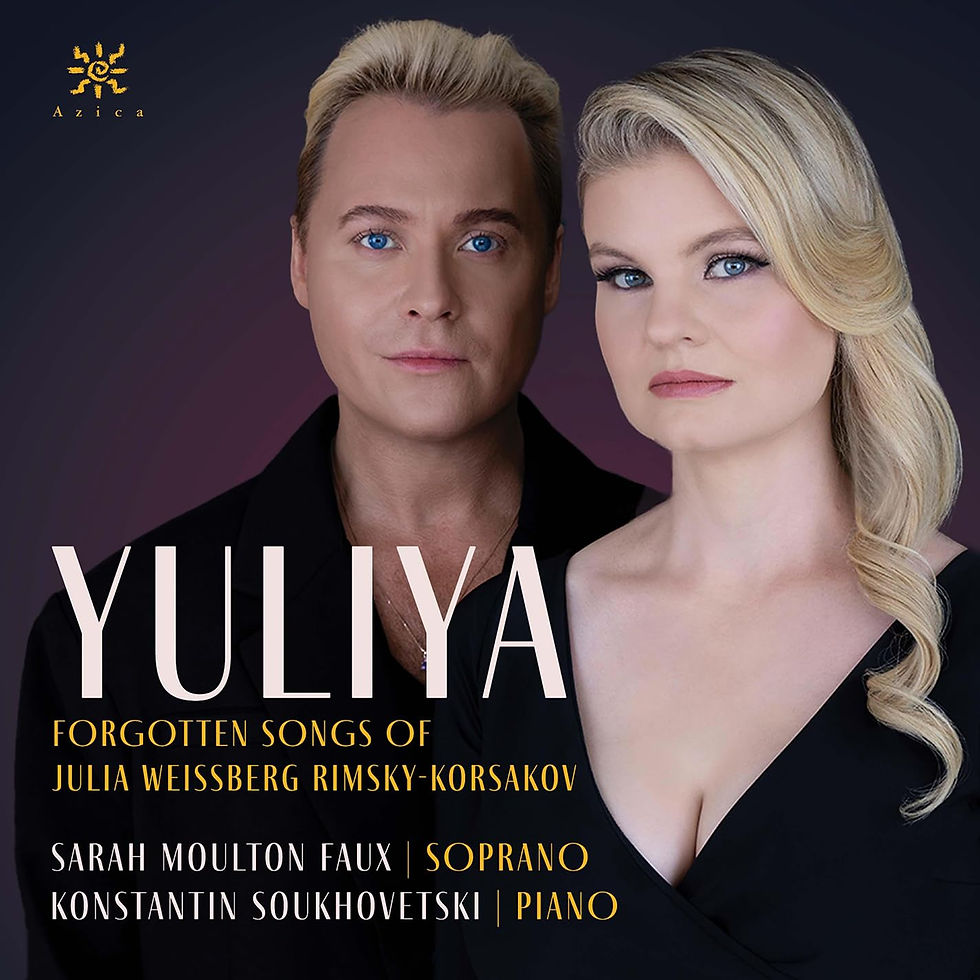The Blind – Lera Auerbach’s A Cappella Opera Provokes a Ritual Experience
- Jul 12, 2013
- 3 min read
Updated: Jun 15, 2020
“I am not a cheerleader,” Auerbach says in our meeting, the day after The Blind premiered on July 9th as part of Lincoln Center Festival.(until July 14th) “I am not trying to please anybody, which, by the way should not be the goal of any artistic endeavor. Yet, art should give you something you have not yet experienced in the same way and you want to be changed by that experience.”

Despite Auerbach’s artistic intentions, critical voices have emerged which attack the political correctness of the core metaphor of The Blind, giving rise to a debate about a symbol largely removed from the context of the work. I ask her, “Why the blindfold? Why the potentially sensational effect?” She explains: “I am not about shocking; The Blind is not a gimmick, but aims to fulfill to Maeterlinck’s (the playwright) call for a symbolist breaking of barriers, and attempts to provide a deep psychological understanding. It also pertains to a religious, meditative state of being, which entails a certain unearthing experience of disorientation, facilitated by the absence of the visual element. The Blind brings the audience away from the material state, exploring mental communication with the music’s ritualistic elements, and hopefully lets the audience come away with an individual learning experience that will stay with them, potentially changing who they are.”
Directed by John La Bouchardière, the New York production of the work, which Auerbach for lack of a more precise description refers to as “a cappella opera,” has omitted the traditional stage setting used in the 2011 Berlin Konzerthaus and Moscow Stanislavsky Theatre productions of her score and libretto. This new, innovative production takes The Blind a step further, eliminating the darkened stage of former productions in favor of the extremely isolating effect of blindfolding the audience; this theatrical method addresses our extreme reliance on visual effects, and aims to challenge the audience’s capacity for hearing, listening, smelling, and feeling temperature, thus evoking a heightened sensory and emotional experience. “Part of Maeterlinck’s conception is a distinct religious connotation, and includes elements of randomness, which, in this production led also to the separate placing of women and men,” says Auerbach, and adding that the experience of the piece also differs slightly for each participant, depending where they are seated. “Every staging demands different elements; in this particular one, timing and positioning was essential to the flow and the individual impression of each audience member.”
Auerbach composed The Blind for 12 voices with no instrumental accompaniment (a cappella) with some supporting liturgical voices chanting in Latin, which serve practically to build the harmonic base for the vocal ‘soloists’ to find their pitches. She explained that the soundtrack played as a prelude to the a cappella performance, her 1992 electronic work ‘After the End of Time,’ provides a separation between two differing genres that start to interact towards the end of the electronic tape, allowing the audience to transition into a new sonic realm to supplement the visual atmosphere created by the blindfolds. The singers interact in constantly changing musical constellations, which grow in large tutti crescendos and culminate and diminish over extended periods of time, leaving the listeners eager for more. Auerbach’s tonal and atonal structures constantly search to renew themselves, creating a desperate unity in the midst of chaos.
The singers’ meticulously choreographed movements through the audience allow each patron to be given utmost individual attention; the performers leave different scents and produce noticeable, specific sounds in association with their movements, playing to the “spectators’” heightened senses and causing them to wait urgently for the next passing singer.

photo: Artwork by Lera Auerbach At times one could make out sounds that meant to imitate walking on gravel. Sometimes a rather unsettling slight touch from seemingly out of nowhere signified the touch of leaves in the wind. These details further personalize the symbolist mood of the 1890 one-act play by Maurice Maeterlinck for each audience member. The atmosphere is quite chilly; I was cold, just like the characters in the play who lament about the cold, a metaphor, of course, for the deeper chill they must wrestle with: the desperation of isolation, physical and psychological abandonment, and death. “Dialogue in the Dark,” an exhibit and workshop at a Global Leadership meeting in Davos, Switzerland, was the inspiration for Auerbach’s perception of The Blind’s presentation. The exhibition involved an experiment of communication in a completely dark environment, which made it impossible to see other participants in the workshop. The state of feeling “suddenly unsure about how to communicate with each other, being aware of how little we listen to each other, and noticing many nuances of visual impact,” left a strong impression on Auerbach. The Blind at Lincoln Center Festival expresses these experiences in a cohesive if unsettling manner, sensitively paying homage to Maeterlinck’s formal language and is, like everything in Auerbach’s works, executed with personal conviction and enthusiasm.



Comments